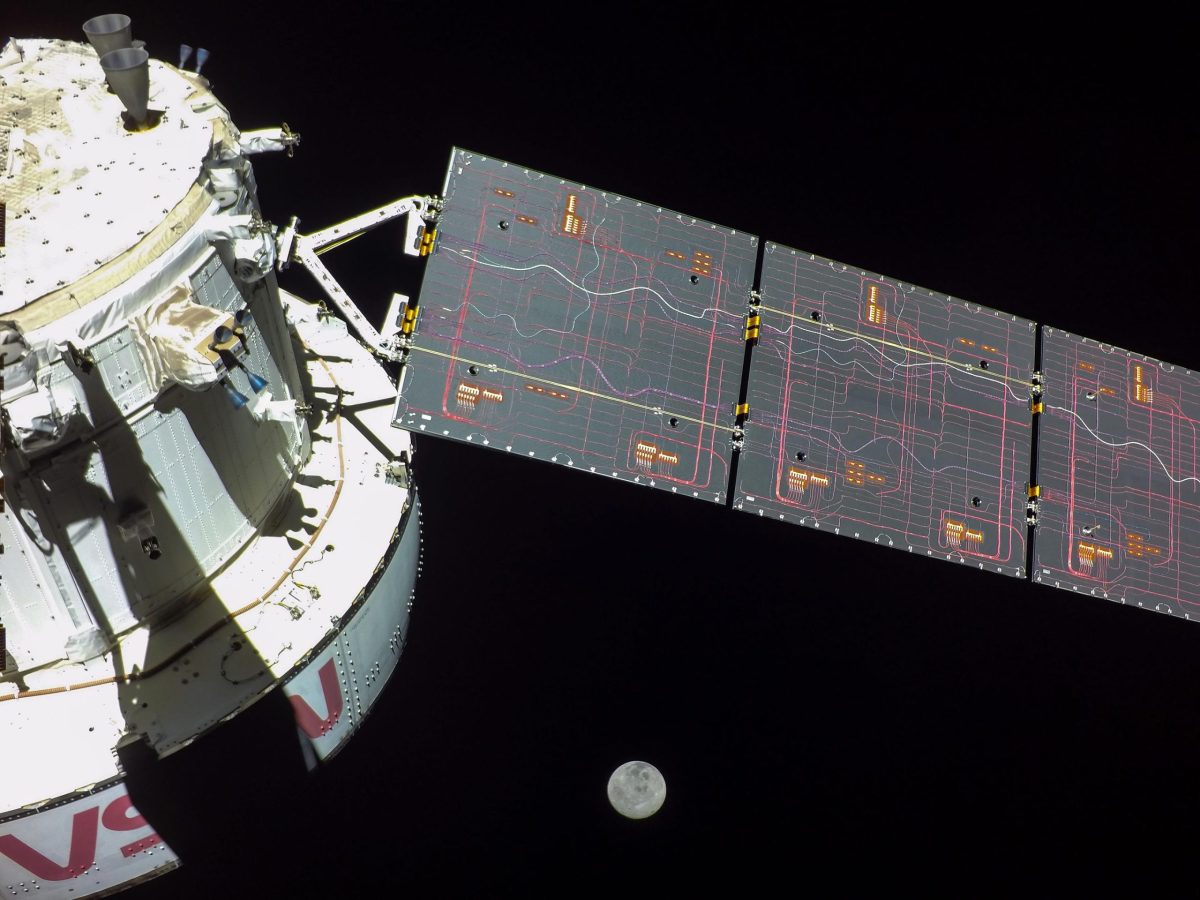A camera mounted on one of Orion’s four solar arrays captured this image of the Moon on flight day 17 of the 25.5-day Artemis I mission from a distance of more than 222,000 miles (357,000 km) from Earth. Orion has exited the distant lunar orbit and is heading for a December 11 splashdown in the Pacific Ocean. Credit: NASA
On Flight Day 18 of NASA’s Artemis I mission, Orion re-entered the lunar sphere of influence at 4:45 p.m. CST on Saturday, December 3. This means that the Moon is now the main gravitational force acting on the spacecraft. Entry into the lunar sphere of entry occurred when the spacecraft was around 39,993 miles (64,362 km) from the lunar surface. It will exit the lunar sphere of influence for a final time on Tuesday, December 6, one day after the return powered flyby about 79 miles (127 km) above the lunar surface.
Engineers also performed a development flight test objective that changed the minimum jet firing time for the reaction control thrusters over a period of 24 hours. This test objective is designed to exercise the reaction control system jets in a pre-planned sequence to model jet thruster firings that will be incorporated into the crewed Artemis II mission.
The test used the reaction control system (RCS) thrusters, built by ArianeGroup, on the European Service Module. All firings of RCS thrusters during the flight test to date have used those on the service module. There are an additional 12 RCS thrusters, built by Aerojet Rocketdyne, that are located on the crew module.

A camera mounted on one of Orion’s four solar arrays captured this image of the Earth on flight day 17 of the 25.5-day Artemis I mission from a distance of more than 222,000 miles (357,000 km). Orion has exited the distant lunar orbit and is heading for a December 11 splashdown in the Pacific Ocean. Credit: NASA
Although the crew module thrusters will be tested a few days before Orion’s splashdown on Earth, their primary role takes place in the final hour before splashdown in the Pacific Ocean. After the crew module and service module separate, the crew module’s RCS thrusters will be used to ensure the spacecraft is properly oriented for re-entry, with its heat shield pointed forward, and stable during descent under parachutes.
Orion will be out of communication with NASA’s Deep Space Network for about 4.5 hours from 7:40 p.m. CST to 12:00 a.m. while network teams reconfigure ground stations. The flight control team has adjusted the activity timeline, and there is no impact on the mission’s trajectory. Automated commands will guide the spacecraft during this period, and Orion will reacquire signal as it passes within range of the Canberra ground station.
Just after 4:30 p.m. CST on December 3, Orion was traveling 221,630 miles (356,679 km) from Earth and 40,086 miles (64,512 km) from the Moon, cruising at 2,777 miles per hour (4,469 k/h).
Share your story or advertise with us: Whatsapp: +2347068606071 Email: info@newspotng.com












